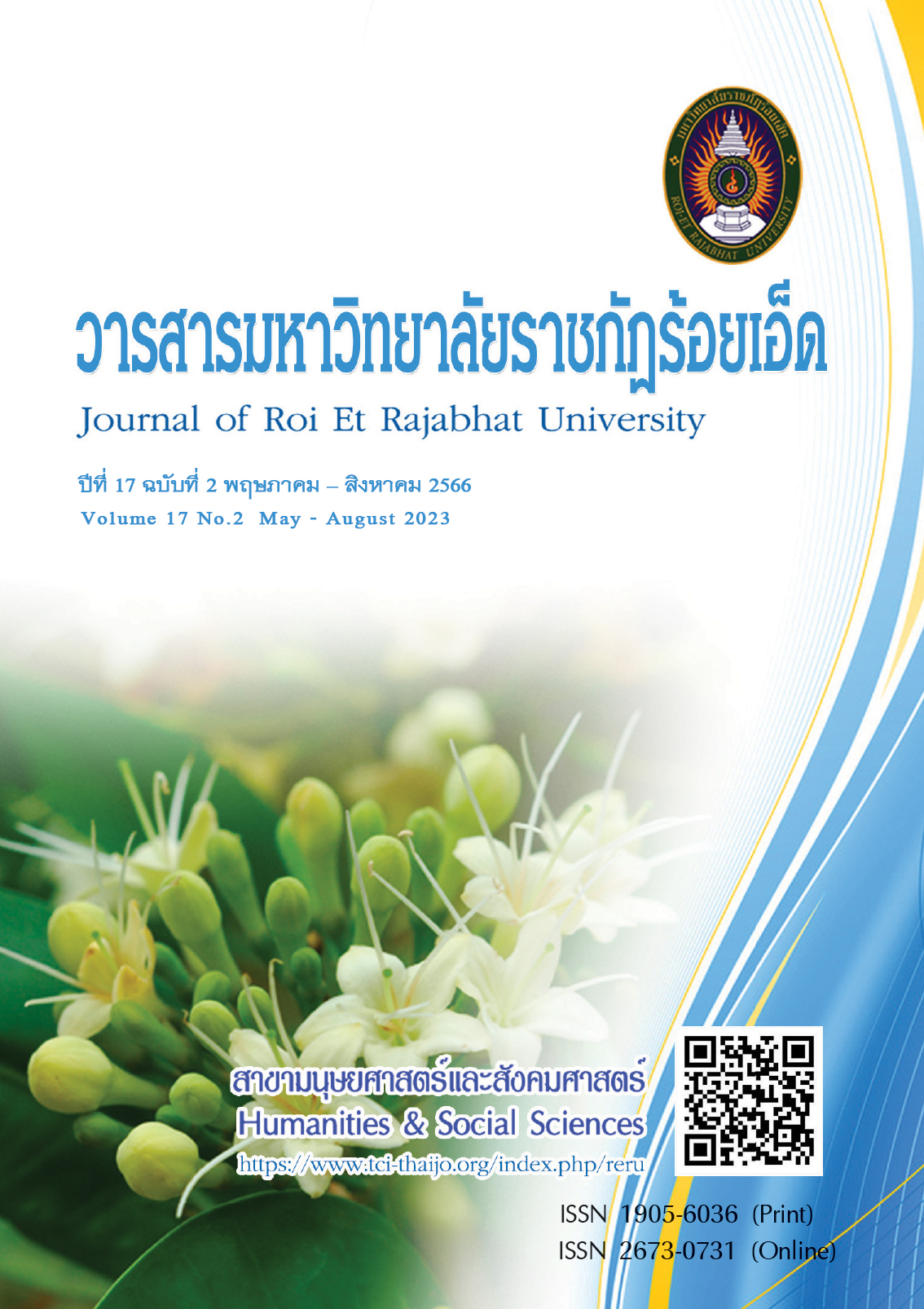Encultural Process Textile Wisdom for Tourism Promotion of Ban Pa Bong Thai Yuan, Mae Khue Sub-District, Doi Saket District, Chiang Mai Province
Keywords:
Textile Wisdom, Tourism, Thai YuanAbstract
The primary aims of this study were to: 1) acquire knowledge regarding the textile wisdom of
the Thai Yuan of Ban Pa Bong; and 2) examine the process of transferring the textile wisdom of the Tai Yuan of Ban Pa Bong to promote tourism. This study was qualitative in nature. The research sample comprised
50 individuals, encompassing community leaders, community philosophers, and young individuals from Thai Yuan Ban Pa Bong. A semi-structured interview was employed as the research instrument for this study.
By conducting individual interviews and engaging in group discussions, the research team gathered data and insights from participants.
The research found that 1) Tai Yuan weaving fabrics are woven fabrics that are the Tai Yuan people's intangible cultural heritage. It is regarded as a craft that displays the identity that identifies the ethnicity and origin inherited from ancestors. There are techniques of jok, pearl raising, spinning (combining lines), Koh Luang, and tying the kan (khad kan) that express the identity of the Thai Yuan people in various dimensions as well, 2) the practice of transmitting the textile knowledge of the Thai Yuan Ban Pa Bong community with the aim of promoting tourism involves the dissemination of wisdom to both children and adults.
This transmission process encompasses various methods such as oral narration, practical demonstrations, hands-on experience, utilization of media resources, learning from educational materials, participation in folk performances, and preservation through written documentation.
References
จรัสพิมพ์ วังเย็น. (2554). แนวคิดหลังสมัยการย้อนสู่โลกแห่งภูมิปัญญา. สถาบันวัฒนธรรมและศิลปะ, 13(1), 20-23.
จารุวรรณ ธรรมวัตร. (2531). ภูมิปัญญาแห่งอีสาน: รวมบทความอีสานศึกษา. มหาสารคาม: มหาวิทยาลัยศรีนรินทรวิโรฒ
มหาสารคาม.
จินต์ประวีร์ เจริญฉิม และสิริชัย ดีเลิศ. (2563). กระบวนการถ่ายทอดภูมิปัญญาของผู้สูงอายุสู่ชุมชนและสังคมที่ยั่งยืน.
วารสารปาริชาต มหาวิทยาลัยทักษิณ, 33(2), 152-167.
นรินทร์ สังข์รักษา. (2559). การจัดการความรู้และภูมิปัญญา. นครปฐม: โรงพิมพ์มหาวิทยาลัยศิลปากร.
ประทับใจ สิกขา. (2555). ผ้าทอพื้นเมืองอีสานใต้. อุบลราชธานี: ศิริธรรมออฟเซ็ต.
ปิรันธ์ ชิณโชติ และธีระวัฒน์ จันทึก. (2559). รูปแบบการจัดการการท่องเที่ยวเชิงสร้างสรรค์ของสวนผึ้ง. Veridian E-Journal,
Silpakorn University, 9(1), 250-268.
พัชรินทร์ สิรสุนทร. (2552). ชุมชนปฏิบัติการด้านการเรียนรู้: แนวคิด เทคนิค และกระบวนการ.กรุงเทพฯ: วี. พริ้นท์ (1991).
ฟองจันทร์ หลวงจันทร์ดวง, สุรชัย กังวล และวราภรณ์ นันทะเสน. (2561). ศักยภาพชุมชนต้นแบบการท่องเที่ยวเชิงสร้างสรรค์
อย่างยั่งยืน, วารสารอิเล็กทรอนิกส์การเรียนรู้ทางไกลเชิงนวัตกรรม, 8(2), 52-83.
ราเมศร์ พรหมชาติ. (2564). แนวทางการพัฒนาศักยภาพการท่องเที่ยวชุมชนบ้านแสลงพัน ตำบลแสลงพัน อำเภอลำปลายมาศ
จังหวัดบุรีรัมย์. วารสารวิชาการ มจร บุรีรัมย์, 6(2), 168-183.
สามารถ จันทร์สูรย์. (2534). ภูมิปัญญาท้องถิ่นคืออะไร. กรุงเทพฯ: คุรุสภาลาดพร้าว.
สำนักงานคณะกรรมการพัฒนาการเศรษฐกิจและสังคมแห่งชาติ. (2552). รายงานการศึกษาเบื้องต้นเศรษฐกิจสร้างสรรค์
(The Creative Economy). กรุงเทพฯ: บี.ซี. เพรส (บุญชิน).
Downloads
Published
How to Cite
Issue
Section
License
Copyright (c) 2023 Roi Et Rajabhat University

This work is licensed under a Creative Commons Attribution-NonCommercial-NoDerivatives 4.0 International License.
บทความที่ได้รับการตีพิมพ์เป็นลิขสิทธิ์ของวารสารมหาวิทยาลัยราชภัฎร้อยเอ็ด
ข้อความที่ปรากฏในบทความแต่ละเรื่องในวารสารวิชาการเล่มนี้เป็นความคิดเห็นส่วนตัวของผู้เขียนแต่ละท่านไม่เกี่ยวข้องกับมหาวิทยาลัยราชภัฎร้อยเอ็ด และคณาจารย์ท่านอื่นๆในมหาวิทยาลัยฯ แต่อย่างใด ความรับผิดชอบองค์ประกอบทั้งหมดของบทความแต่ละเรื่องเป็นของผู้เขียนแต่ละท่าน หากมีความผิดพลาดใดๆ ผู้เขียนแต่ละท่านจะรับผิดชอบบทความของตนเองแต่ผู้เดียว





